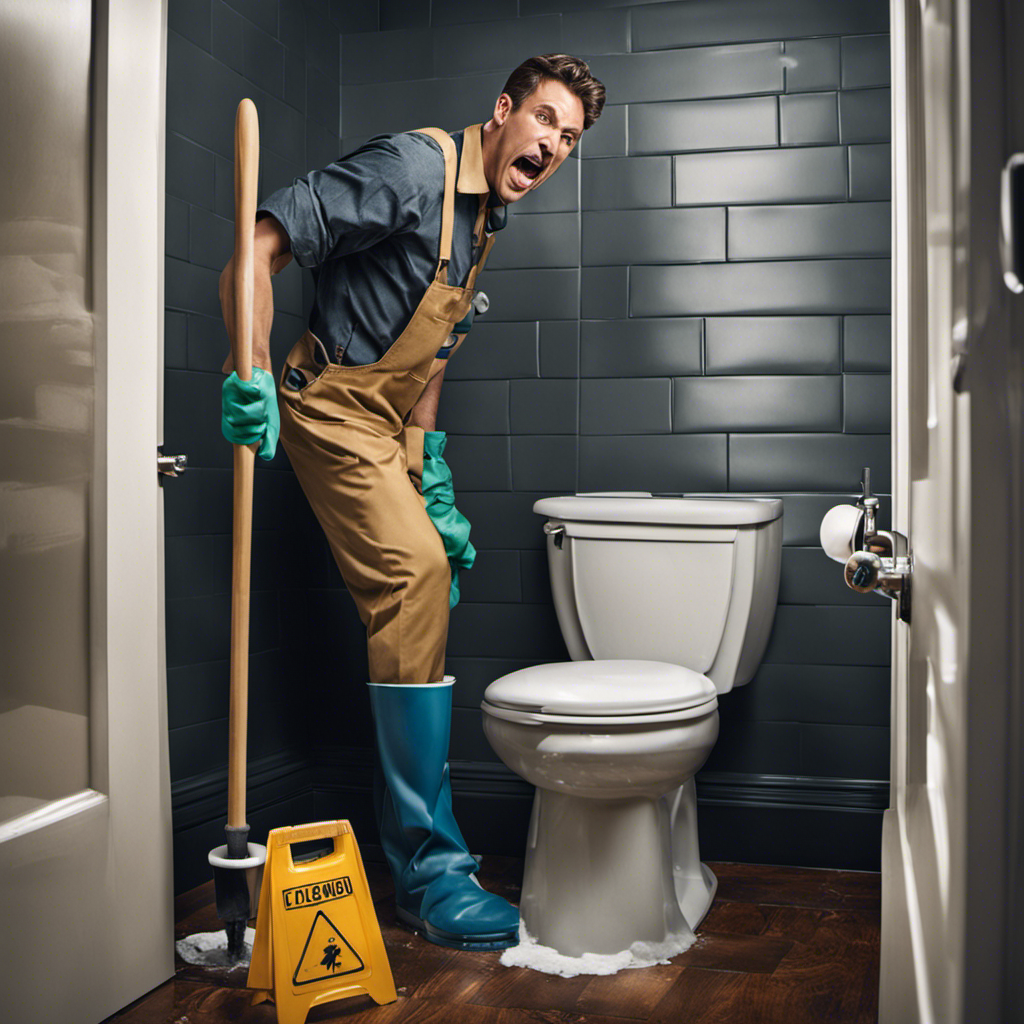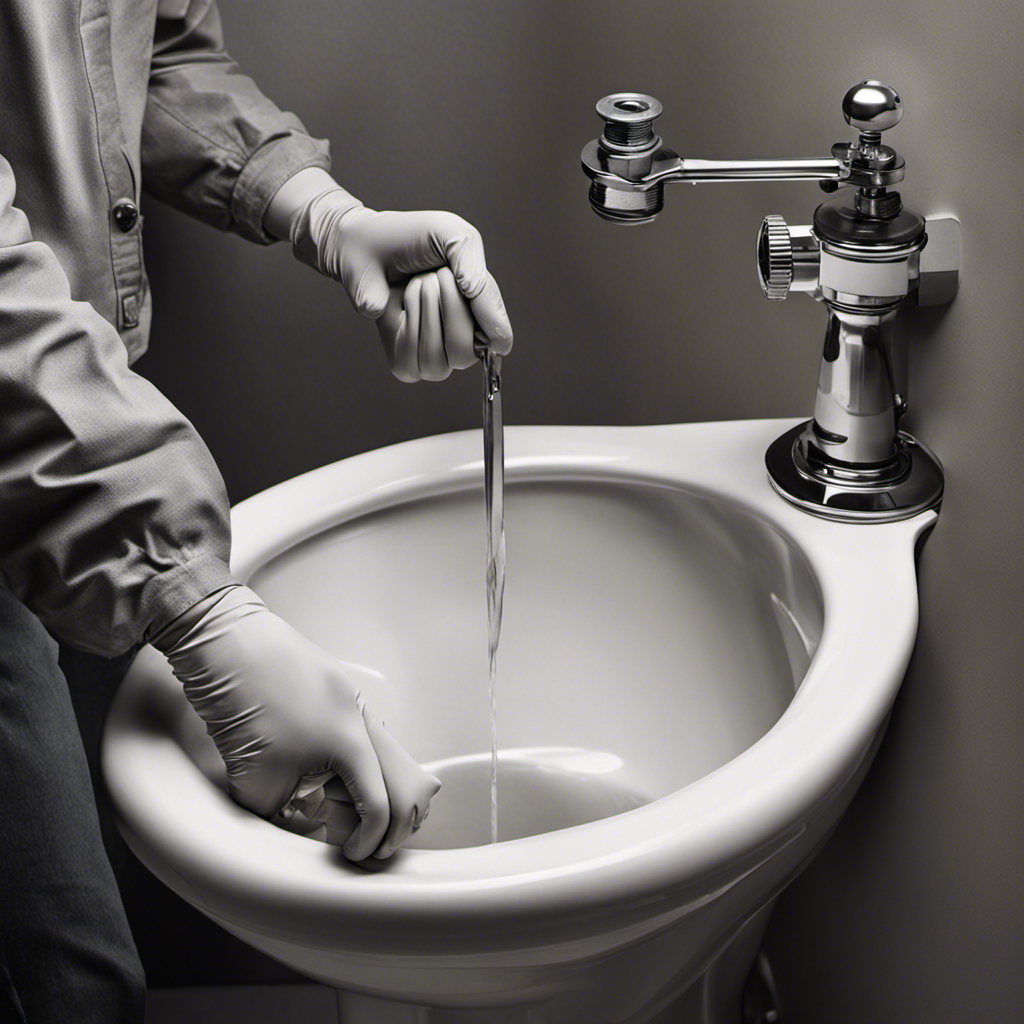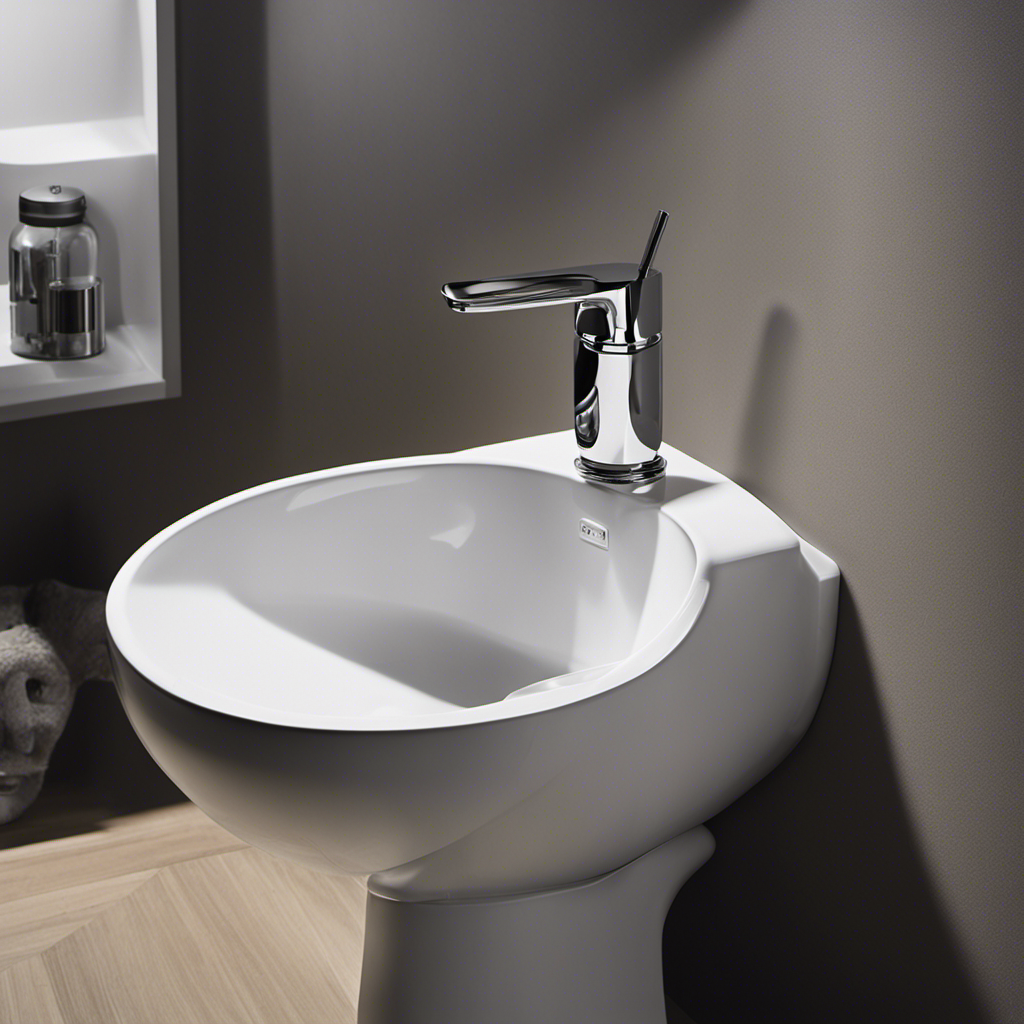So picture this: you’re at a friend’s house for a dinner party, enjoying a great meal and great company.
Suddenly, disaster strikes – the toilet gets clogged. Panic sets in, and you find yourself desperately wondering, ‘How do I unclog a toilet?’
Well, fear not, because I’ve got you covered. In this article, I’ll guide you through the step-by-step process of unclogging a toilet, share common causes of toilet clogs, offer natural and chemical methods for unclogging, and even give you tips on preventing future clogs.
Let’s tackle this toilet trouble together!
Key Takeaways
- The equipment and tools needed to unclog a toilet include a plunger, toilet auger, rubber gloves, and a handle.
- The step-by-step guide to unclog a toilet involves using a plunger and a toilet auger if necessary, and taking preventive measures to avoid future clogs.
- Common causes of toilet clogs include flushing non-flushable items and not being aware of what can and cannot be flushed.
- Natural methods such as using baking soda and vinegar or hot water and dish soap can be effective in unclogging a toilet, and chemicals should be used as a last resort.
Equipment Needed for Unclogging a Toilet
To unclog a toilet, you’ll need a plunger and a toilet auger. These two tools are essential for tackling any toilet blockage.
The toilet plunger is a rubber suction cup attached to a wooden or plastic handle. It creates a seal around the drain and uses pressure to dislodge the clog.
The drain snake, also known as a toilet auger, is a long flexible cable with a coiled end. It is designed to reach deep into the toilet drain and physically break up the blockage. By rotating and maneuvering the drain snake, you can clear stubborn clogs that the plunger may not be able to handle.
Now that we have the necessary equipment, let’s move on to the step-by-step guide to unclog a toilet.
Step-by-Step Guide to Unclog a Toilet
Start by grabbing a plunger and positioning it over the drain. Make sure to create a tight seal. Once in place, push and pull the plunger vigorously to create suction. This will help dislodge the clog and clear the toilet.
If the plunger doesn’t work, try using a toilet auger. Insert the auger into the toilet bowl and rotate the handle clockwise. This will help break up the clog and allow it to be flushed away.
To prevent future clogs, avoid flushing items like wipes, feminine products, and excessive toilet paper. Additionally, consider using a toilet bowl cleaner that helps break down waste.
If all else fails, you can always contact professional toilet unclogging services for assistance. They have the expertise and tools to handle even the toughest clogs.
Common Causes of Toilet Clogs
One common cause of toilet clogs is flushing items that are not meant to be flushed, such as wipes or feminine products. These items can easily get stuck in the pipes, causing a blockage that prevents proper water flow.
It is important to educate ourselves and others about what can and cannot be flushed down the toilet. Prevention is key in avoiding toilet clogs. Always remember to only flush toilet paper and waste.
Signs of a clogged toilet include water not draining or draining slowly, gurgling sounds, and water rising in the bowl after flushing. If you notice any of these signs, it is crucial to address the issue promptly to prevent further damage and potential flooding.
Natural Methods for Unclogging a Toilet
Flushing a mixture of baking soda and vinegar down the toilet can help unclog the pipes. It’s one of the many natural remedies and DIY solutions that can be used to tackle a clogged toilet.
Here are some other effective methods worth trying:
-
Hot water and dish soap: Pour a generous amount of dish soap into the toilet bowl, followed by a bucket of hot water. Let it sit for a few minutes before flushing.
-
Plunger: Use a plunger to create suction and dislodge the clog. Make sure to cover the entire drain opening and plunge vigorously.
-
Wire hanger: Straighten a wire hanger and insert it into the toilet drain. Gently wiggle and maneuver it to break up the clog.
These natural methods are often successful in unclogging a toilet, but if they don’t work, it might be necessary to consider using effective chemicals for unclogging a toilet.
Effective Chemicals for Unclogging a Toilet
If the natural methods don’t work, try using effective chemicals to clear the clog in your toilet.
When faced with a stubborn clog, it’s important to have effective methods at your disposal. DIY solutions can be a great way to save money and quickly resolve the issue.
One effective chemical solution is a toilet bowl cleaner that contains a high concentration of sodium hydroxide or sulfuric acid. These chemicals work by breaking down the organic matter causing the clog.
It’s crucial to follow the manufacturer’s instructions and use protective gloves and eyewear when handling these chemicals. Pour the recommended amount of cleaner into the toilet bowl, let it sit for the specified time, and then flush the toilet.
Remember to always use these chemicals as a last resort and keep them out of reach of children and pets.
Preventing Future Toilet Clogs
I’ve learned a lot about unclogging toilets, but now I want to shift the focus to preventing future clogs.
In this discussion, I will share some maintenance tips for toilets that can help keep them running smoothly.
Additionally, I will address the common causes of clogs, so you can be aware of what to avoid and take proactive measures to prevent them in the first place.
Maintenance Tips for Toilets
Regularly cleaning your toilet can help prevent clogs and keep it functioning properly. Here are some maintenance tips for keeping your toilet in top shape:
- Use a toilet brush and cleaner to regularly clean the inside of the bowl.
- Wipe down the exterior of the toilet with a disinfecting wipe or cleaner.
- Check the water level in the tank regularly and adjust if needed.
- Inspect the flushing mechanism for any signs of damage or wear.
- Keep an eye out for any leaks or drips and address them promptly.
- Consider using a toilet bowl cleaner that contains bleach to help prevent stains and buildup.
By following these toilet cleaning and maintenance tips, you can ensure that your toilet stays clog-free and functions properly.
However, sometimes clogs can still happen due to various reasons, as we will explore in the next section.
Common Causes of Clogs
Now that we’ve covered some maintenance tips for toilets, let’s move on to the next subtopic: common causes of clogs.
Understanding why toilets get clogged can help us prevent them in the first place. One of the main culprits is flushing items that shouldn’t be flushed, such as paper towels, feminine hygiene products, or excessive amounts of toilet paper.
Another cause is a buildup of mineral deposits or sediment in the pipes, which can restrict the flow of water. Additionally, a low-flow toilet or a weak flush can contribute to clogs.
To prevent toilet clogs, it’s important to educate everyone in the household about what can and cannot be flushed. Regular maintenance, such as using a plunger or a plumbing snake, can help remove minor clogs, but for more stubborn clogs, it may be necessary to call a professional plumber.
Frequently Asked Questions
What Are Some Signs That Indicate a Toilet Is Clogged?
When my toilet gets clogged, I notice water rising to the rim, slow drainage, and gurgling sounds. These signs indicate a clogged toilet, and it’s important to address the issue promptly to prevent further damage.
Can I Use a Plunger to Unclog a Toilet?
Yes, I can use a plunger to unclog a toilet. It’s a handy tool that creates pressure to dislodge the blockage. However, there are alternative methods and common causes of toilet clogs to consider.
Is It Safe to Use a Toilet Auger or Snake to Unclog a Toilet?
Using a toilet auger or snake to unclog a toilet can be safe if done correctly. However, there are alternative unclogging methods such as using a plunger or a mixture of hot water and dish soap.
What Should I Do if the Toilet Is Overflowing?
If the toilet is overflowing, it’s important to act quickly to prevent further damage. First, turn off the water supply to the toilet. Then, use a plunger to try and unclog the toilet. If that doesn’t work, call a plumber for assistance.
How Do I Know if I Need Professional Help to Unclog a Toilet?
If the toilet remains clogged after attempting DIY solutions, it may be time to consider professional help. They have the expertise and tools to effectively unclog the toilet and prevent further damage.
Conclusion
In conclusion, unclogging a toilet can be a simple task if you have the right tools and knowledge. By following the step-by-step guide and using the appropriate equipment, you can easily tackle any clog.
It’s important to be aware of the common causes of toilet clogs and to take preventative measures to avoid future issues. Additionally, exploring natural methods and effective chemicals can provide alternative solutions.
So next time you find yourself facing a clogged toilet, don’t panic. You now have the know-how to handle it with ease.










